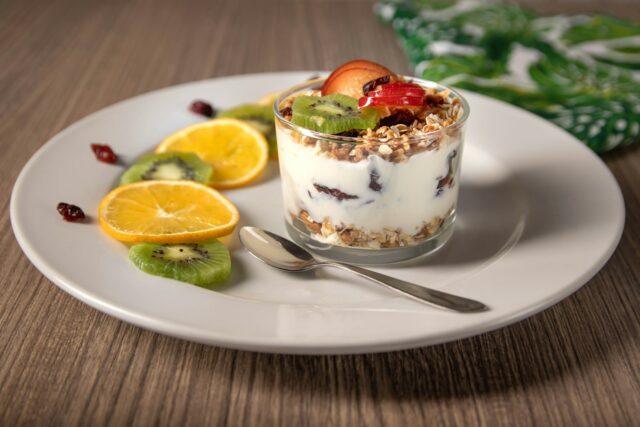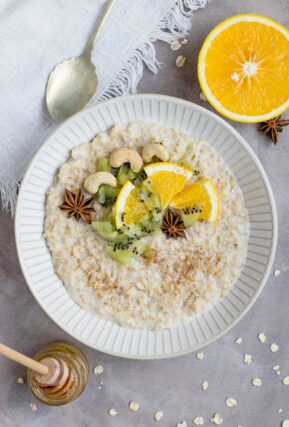5 Steps to a Happier, Healthier Gut (and a Healthier You!)
We’ve got an epidemic of chronic poor health in the United States. Talk to almost anyone, and it seems like they have a sensitive stomach or some other gut-related issue—diarrhea, constipation, heartburn, bloating, you name it. These are the obvious signs of gut dysfunction, but many people don’t realize how much poor gut health and the chronic inflammation it causes contribute to other health problems. Think mental health struggles, obesity, diabetes, heart disease, autoimmune diseases, and even cancer.
If we want to tackle these conditions, we need to dig deeper—literally—to the root of the inflammation and heal our gut.
Why Is Gut Dysfunction So Common?
Many factors contribute, but here are some key reasons: our diet is really poor, filled with things that danage the lining of our GI tract, void of the fiber and nutrients our GI bacteria need to survive, we live stress-filled lives with a lot of chronic stress built in, and this leaves GI bacteria is all jacked up, . Your GI tract is home to a complex ecosystem of helpful organisms that do so much for us: digest food, help us absorb nutrients, maintain the health of our gut lining, and even regulate our immune system and nervous system. This interconnectedness means that when your gut is out of balance, your whole body feels it. Misfiring in your gut’s nervous system can affect your brain, and chronic low-grade inflammation can impact every system in your body.
While chronic gut issues can feel overwhelming, the good news is that there are some basic, actionable steps you can take to heal your gut and feel better. I like to use a five-step framework to make it easy.

Step 1: Remove the Bad Stuff
The first step to healing your gut is to remove anything that could be messing with your healthy bacteria and gut lining. Here’s what to tackle:
- Food sensitivities: Gluten, dairy, and soy are common culprits. You can start with a food sensitivity test (try this one or this one) , but you can also track your symptoms and experiment with eliminating foods.
- Bad bacteria: These unwelcome guests can push out the good guys. Natural herbs like oregano and berberine can help balance your gut microbiome. Berberine (HERE) is particularly great because it also supports healthy blood sugar levels. For more targeted support, work with a healthcare provider who can recommend a good antimicrobial protocol.
Step 2: Reintroduce the Good Guys
Once you’ve cleared out the bad stuff, it’s time to replenish your gut with the good bacteria. This helps crowd out the bad guys and supports overall gut health.
- Probiotic supplements: Choose a broad-spectrum probiotic to cover your bases. (HERE, HERE or HERE)
- Probiotic foods: Load up on yogurt, sauerkraut, kimchi, and kombucha. These foods are packed with beneficial bacteria.
- Digestive enzymes: If your digestion is struggling (lots of bloating or undigested food in your stool), try supplementing with digestive enzymes for a few months. Take them with meals and see if they make a difference. (HERE)
Step 3: Nourish Your Gut
Now that you’ve got the right bacteria in place, it’s time to feed them what they need to thrive. Your gut bacteria love fiber and nutrients from whole foods.
- Fiber: Found in whole grains, fruits, and vegetables, fiber is essential for gut health.
- Polyphenols: These plant compounds, found in colorful fruits and veggies, are like jet fuel for your gut bacteria. Think berries, leafy greens, and spices like turmeric. (Get as much from feed as you can, but you can add this supplement for extra support)
Step 4: Support Healing
If your gut’s been struggling for a while, you probably have some healing to do. Luckily, there are supplements that can help repair your gut lining and reduce inflammation:
- L-glutamine: Supports the repair of your gut lining. (HERE or HERE)
- Slippery elm: Helps heal the mucosal layer of your gut, which acts as a protective barrier. (I like this supplement with slippery elm, aloe vera and DLg)
- Colostrum: Boosts immune function in the gut. If you’re dairy-sensitive, look for a non-dairy version. (HERE)
- Curcumin: Found in turmeric, it’s a powerhouse for reducing inflammation throughout your body. (HERE and try this blend, it has a few supplements in one)
- Omega-3s: These fatty acids are excellent for reducing systemic inflammation. (HERE)
Step 5: Find Emotional Balance
Your gut and emotions are deeply connected. Chronic stress sends your body into fight-or-flight mode, making it harder for your gut to heal. Finding ways to calm your nervous system is crucial for gut health.
- Breathing exercises: Simple, intentional breathing can calm your nervous system in seconds.
- Meditation: Just a few minutes a day can help lower stress and support healing.
- Movement: Gentle exercise like walking, yoga, or stretching can work wonders.
- Self-care: Journaling, connecting with loved ones, or simply taking time to relax can help reduce emotional stress.

Healing your gut might seem like a big task, but it’s pretty simple when you break it down:
- Remove the Bad Stuff Kick out the troublemakers—whether it’s food sensitivities, toxins, or harmful bacteria. Identifying and eliminating these triggers creates the foundation for healing.
- Reintroduce the Good Guys. Repopulate your gut with beneficial bacteria by incorporating probiotics and fermented foods. These help restore balance and crowd out the bad bacteria. Add what’s missing, like digestive enzymes or stomach acid, to help your gut function optimally. This gives your digestive system a boost while you work on healing.
- Nourish: Eat high fiber, nutrient-rich foods to feed the bacteria what they need to thrive. Your gut bacteria love fiber and nutrients from whole foods. These foods also reduce inflammation and replenish necessary vitamins and minerals.
- Repair Your Gut Lining Support the healing of your gut lining with supplements like L-glutamine, slippery elm, and omega-3s. These nutrients help your gut rebuild and strengthen.
- Rebalance Your Mind and Body. Stress management is crucial. Practice mindfulness, meditation, or other relaxation techniques to calm your nervous system. A peaceful mind supports a healthy gut!
When your gut is happy, your whole body benefits. So take these steps, and soon enough, you’ll be on your way to feeling better, healthier, and more vibrant.
This post contains affiliate links, which means I may earn a small commission if you make a purchase through these links—at no extra cost to you. Thank you for supporting my work!.




